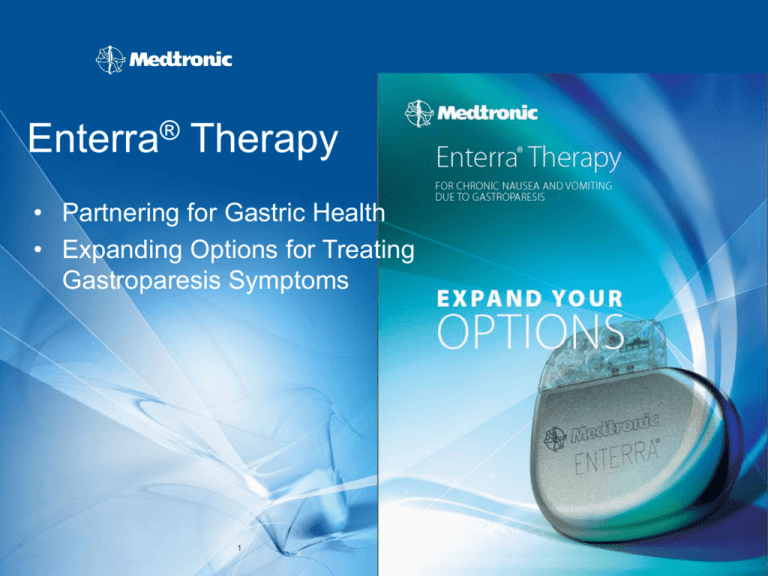
More recently, an alternative therapy, gastric electrical stimulation (GES) using an implantable neurostimulator (Enterra Therapy Itrel 3 model 7425G Medtronic Inc, Minneapolis, Minn), received a humanitarian device exemption for the management of these patients. The magnitude of the gastric dysfunction in these patients often leads to gastric resection. This end-stage gastric dysfunction results most commonly from insulin-dependent diabetes mellitus 3, 4 but can also result from viral gastritis 5 and surgical vagal nerve injury. These patients have frequent hospital admissions, are socially restricted by their symptoms, and require enteral or parenteral feedings to maintain their nutrition. 1, 2 There is a subset of patients, however, who have a chronic debilitating problem that is uncontrolled by antiemetic or prokinetic medications, is associated with severe epigastric pain 3 often resulting in narcotic dependence, and is manifested by the inability to eat, nutritional compromise, and weight loss. Gastric dysfunction in the absence of a structural or mechanical obstruction usually causes minor symptoms that are easily controlled with medications and is a self-limiting condition of short duration. Additional procedures were required in 4 patients (owing to poor outcome in 3 patients).Ĭonclusions Gastric electrical stimulation ameliorated symptoms, returned patients to normal oral nutritional intake, increased body mass index, improved gastric emptying rates, and is an alternative to gastrectomy in patients with end-stage gastric disease. The median gastric emptying rate (percentage per minute) was measured in 15 of the 27 patients postoperatively and showed significant improvement (0.17% per minute preoperatively vs 0.38% per minute postoperatively P<.001). The median body mass index improved significantly (22.9 preoperatively vs 25.1 postoperatively P = .006).

Nutritional support was discontinued in the 19 patients who were dependent on supplemental feeding before the procedure ( P<.001). Symptom control was excellent to good in 19 patients. All of the patients tolerated an oral diet at discharge. There was no 30-day mortality or morbidity in 4 patients. Results Follow-up results were available in 27 patients. Main Outcome Measures Morbidity and mortality of the procedure, symptom control, hospital readmissions, need for supplemental nutritional support, body mass index (calculated as weight in kilograms divided by the square of height in meters), and gastric emptying. Interventions Placement of a gastric stimulator device laparoscopically in 24 patients and by laparotomy in 5 patients. Twenty-four patients had type 1 diabetic gastroparesis and 5 patients had idiopathic gastroparesis. Patients Twenty-nine patients (22 women, 7 men median age, 39 years age range, 20-87 years) with debilitating gastroparesis who were referred for gastrectomy from December 10, 2001, through October 1, 2004.

Settings A tertiary care university hospital and a university-affiliated community hospital.
Gastric stimulator series#
Hypothesis Gastric electrical stimulation is an alternative to gastrectomy in patients with refractory gastroparesis.ĭesign Retrospective case series with a median follow-up of 20 months. Shared Decision Making and Communication.Scientific Discovery and the Future of Medicine.

Health Care Economics, Insurance, Payment.Clinical Implications of Basic Neuroscience.Challenges in Clinical Electrocardiography.


 0 kommentar(er)
0 kommentar(er)
